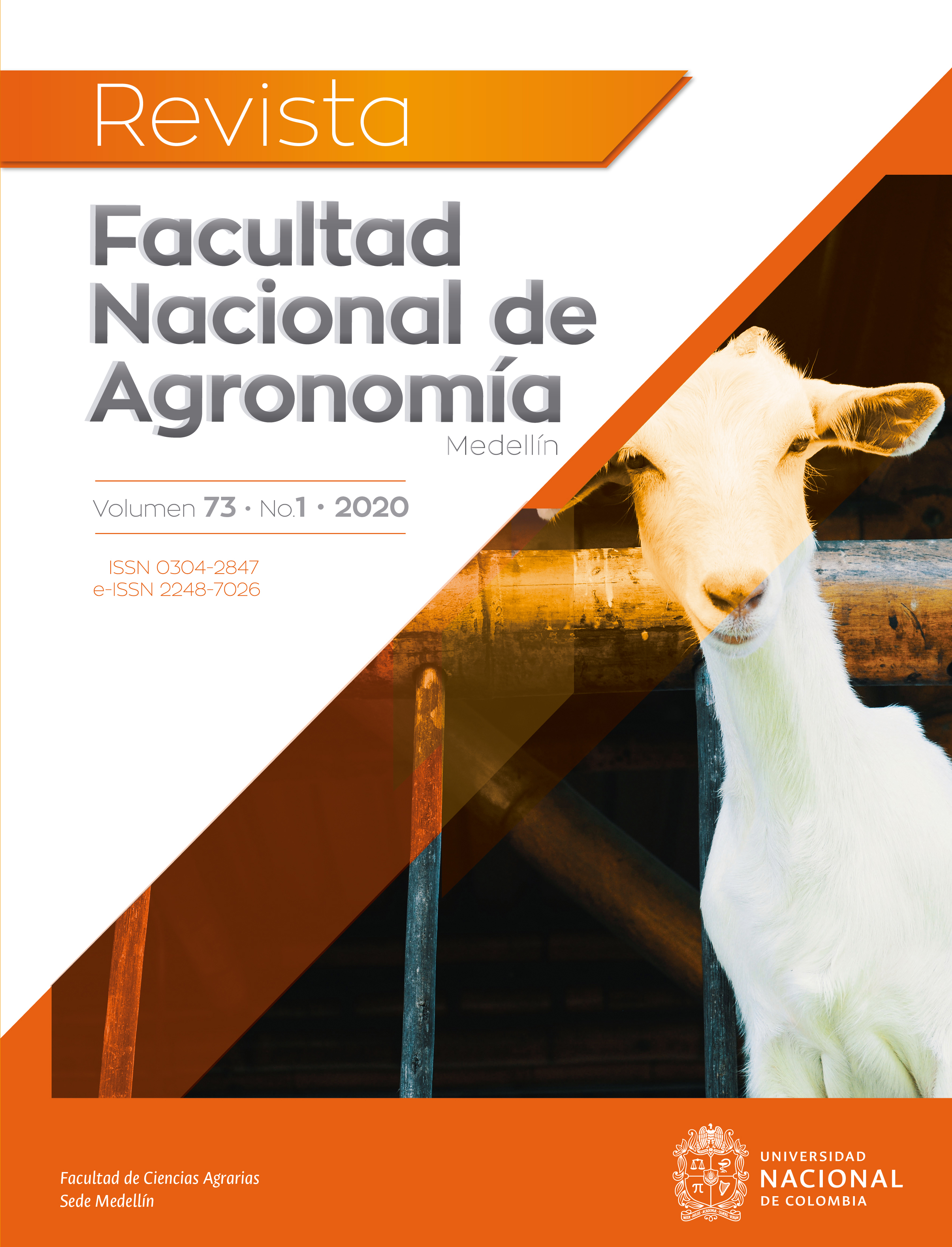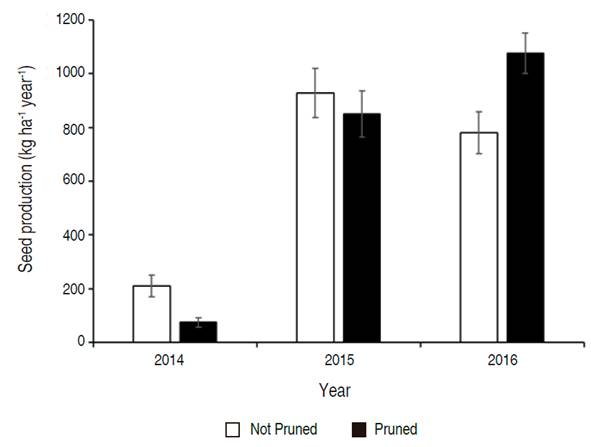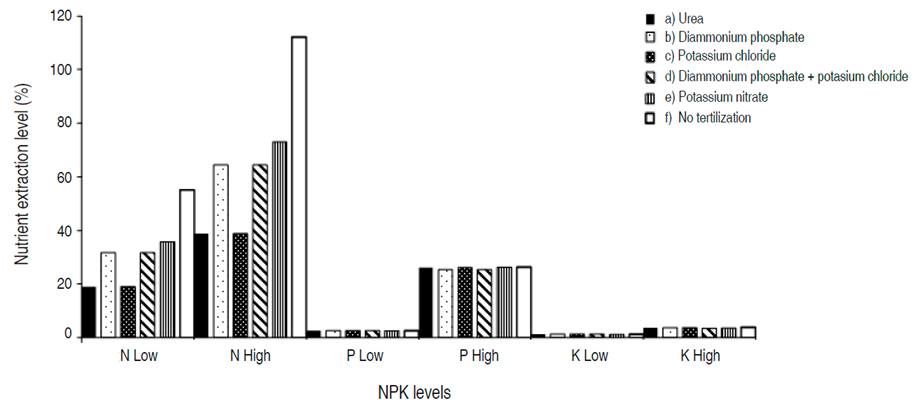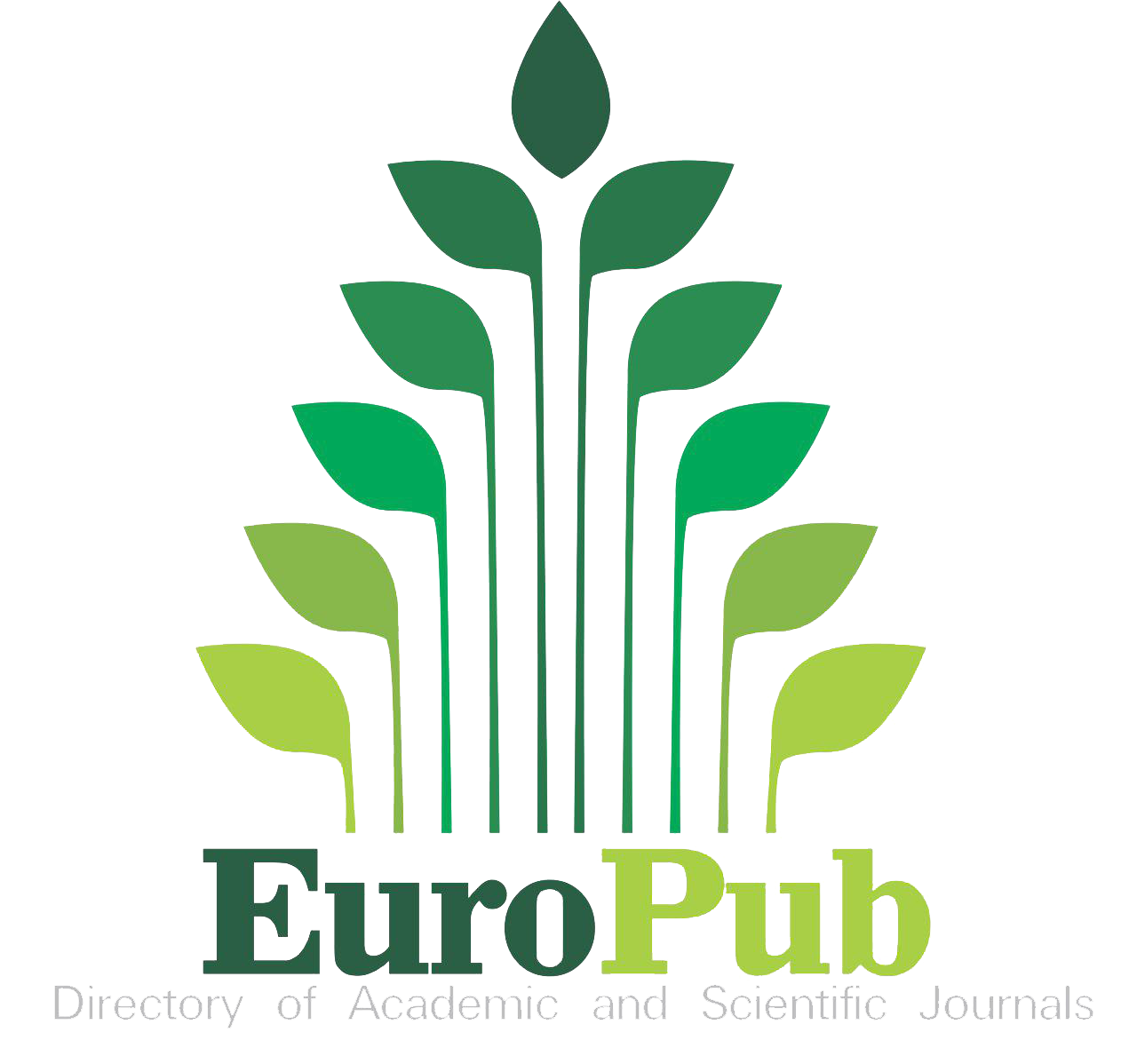Pruning and fertilization effects on Jatropha yields under smallholder’s conditions in a Tropical Dry Forest from Ecuador
Efectos de poda y fertilización en los rendimientos de Jatropha bajo condiciones de pequeños agricultores en un Bosque Seco Tropical de Ecuador
DOI:
https://doi.org/10.15446/rfnam.v73n1.79059Keywords:
Biodiesel, Jatropha curcas, Marginal land, Seed productions (en)Biodiesel, Jatropha curcas, Tierras marginales, Producción de semillas (es)
Jatropha seed is a biomass suitable for bioenergy production that can be produced by smallholders, even on marginal lands. However, the current oilseed production is too low to meet the needs of the planned renewable electricity system in the Galapagos Islands. Pruning and fertilization are management options that can be used to increase the dry seed yields. The effects of both treatments were tested in a split-plot design with jatropha trees, which were monitored during a three-year production period. The average seed production was 643±58 kg ha-1 year-1 in the unpruned trees and 696±50 kg ha-1 year-1 in the pruned trees. Although this difference is small, it is expected to increase over time. The pruned trees developed more slowly than the unpruned trees but showed higher (and still increasing) yields at the end of the three-year test period, while the unpruned trees appeared to have reached their maximum production by the second year of the trial. The low fertilizer doses approved by the smallholders did not have a significant impact on the dry seed yield, and the management options that show benefits in the long term are generally not accepted or adopted by them. Cost-effective nutrient enhancement should be investigated, such as inoculation with arbuscular mycorrhizal fungi.
La semilla de jatropha es una biomasa adecuada para la producción de bioenergía que pueden producir los pequeños agricultores, incluso en tierras marginales. Sin embargo, actualmente la producción es demasiado baja para satisfacer las necesidades del sistema de electricidad renovable planificado en las Islas Galápagos. La poda y la fertilización son opciones de manejo que pueden utilizarse para aumentar los rendimientos de semillas secas. Se probaron los efectos de ambos tratamientos en un diseño de parcelas divididas con árboles de jatropha, que se monitorearon durante un período de producción de tres años. La producción promedio de semillas fue de 643±58 kg ha-1 año-1 en los árboles sin podar y 696±50 kg ha-1 año-1 en los árboles podados. Aunque esta diferencia es pequeña, se espera que aumente con el tiempo. Los árboles podados se desarrollaron más lentamente que los árboles sin podar, pero mostraron rendimientos más altos (con potencial de seguir aumentado) al final del periodo de prueba de tres años, mientras que los árboles sin podar parecían haber alcanzado su producción máxima para el segundo año de la prueba. Las bajas dosis de fertilizante probadas por los pequeños agricultores no tuvieron un impacto significativo en el rendimiento de la semilla seca y las opciones de manejo forestal que suponen beneficios a largo plazo generalmente no son aceptadas o adoptadas por ellos. Se deben investigar otras fuentes
rentables de mejora de nutrientes, como la inoculación de los árboles con hongos micorrízicos arbusculares.
Recibido: 11 de abril de 2019; Aceptado: 15 de noviembre de 2019
ABSTRACT
Jatropha seed is a biomass suitable for bioenergy production that can be produced by smallholders, even on marginal lands. However, the current oilseed production is too low to meet the needs of the planned renewable electricity system in the Galapagos Islands. Pruning and fertilization are management options that can be used to increase the dry seed yields. The effects of both treatments were tested in a split-plot design with jatropha trees, which were monitored during a three-year production period. The average seed production was 643±58 kg ha-1 year-1 in the unpruned trees and 696±50 kg ha-1 year-1 in the pruned trees. Although this difference is small, it is expected to increase over time. The pruned trees developed more slowly than the unpruned trees but showed higher (and still increasing) yields at the end of the three-year test period, while the unpruned trees appeared to have reached their maximum production by the second year of the trial. The low fertilizer doses approved by the smallholders did not have a significant impact on the dry seed yield, and the management options that show benefits in the long term are generally not accepted or adopted by them. Cost-effective nutrient enhancement should be investigated, such as inoculation with arbuscular mycorrhizal fungi.
Keywords:
Biodiesel, Jatropha curcas, Marginal land, Seed productions.RESUMEN
La semilla de jatropha es una biomasa adecuada para la producción de bioenergía que pueden producir los pequeños agricultores, incluso en tierras marginales. Sin embargo, actualmente la producción es demasiado baja para satisfacer las necesidades del sistema de electricidad renovable planificado en las Islas Galápagos. La poda y la fertilización son opciones de manejo que pueden utilizarse para aumentar los rendimientos de semillas secas. Se probaron los efectos de ambos tratamientos en un diseño de parcelas divididas con árboles de jatropha, que se monitorearon durante un período de producción de tres años. La producción promedio de semillas fue de 643±58 kg ha-1 año-1 en los árboles sin podar y 696±50 kg ha-1 año-1 en los árboles podados. Aunque esta diferencia es pequeña, se espera que aumente con el tiempo. Los árboles podados se desarrollaron más lentamente que los árboles sin podar, pero mostraron rendimientos más altos (con potencial de seguir aumentado) al final del periodo de prueba de tres años, mientras que los árboles sin podar parecían haber alcanzado su producción máxima para el segundo año de la prueba. Las bajas dosis de fertilizante probadas por los pequeños agricultores no tuvieron un impacto significativo en el rendimiento de la semilla seca y las opciones de manejo forestal que suponen beneficios a largo plazo generalmente no son aceptadas o adoptadas por ellos. Se deben investigar otras fuentes rentables de mejora de nutrientes, como la inoculación de los árboles con hongos micorrízicos arbusculares.
Palabras clave:
Biodiesel, Jatropha curcas, Tierras marginales, Producción de semillas.Jatropha curcas L. is native from Mexico and Central America. This multipurpose plant grows as a tree in seasonal tropical forest and as a shrub in savannah and thorn forest (Negussie et al., 2015). The tree reaches heights of 3-5 m and can be cultivated in commercial plantations or as living fences to separate fields (Rade-Loor et al., 2017). Jatropha cultivation has been promoted because of the oil content of the seeds for biofuels production. The sale of the seeds could improve the socio-economic conditions of smallholders, and the crop can be used to recover degraded land in arid and semi-arid tropical regions (Iyama et al., 2013). Indeed, several large biofuel projects are being established in the tropics, for instance, in sub-Saharan Africa; nevertheless, investments in some jatropha projects have failed (Walmsley et al., 2016). In 2011 the Ecuadorian Government began a project entitled "Renewable Energy for the Galapagos Islands" within the "Jatropha for Galapagos Project" aimed at reducing the use of fossil fuel (diesel oil) to generate electricity on Floreana Island. The province of Manabí was selected for establishing trial jatropha plantations (Cañadas-López et al., 2018).
Other problems, that must also be addressed, include the potentially low seed yield caused by the imbalance between male and female fIowers, the controversy surrounding the food vs. fuel debate (Cañadas-López et al., 2017), the low economic viability due to unstable yields (Rade-Loor et al., 2017), the lower-than-expected production caused by the lack of improved material (Cañadas-López et al., 2017), and the incidence of pests and diseases (Edrisi et al., 2015). Jatropha can be cultivated on marginal land in soils of low fertility. Importantly, jatropha seed production can be increased by the application of various management practices, such as adequate spacing, fertilization, pruning, irrigation, and pest control (Montenegro et al., 2014).
Pruning encourages branching and stimulates healthy, abundant flowering of trees and is a common management intervention in horticulture. Pruning generally improves the canopy architecture, which promotes fruit production and tree structure by optimizing the arrangement of branches and leaves, the size of the tree, and the crown structure and form (Suriharn et al., 2011). Cañadas-López et al. (2017) reported a strong correlation between the number of branches and jatropha seed production in Ecuador. The jatropha seed yield can be determined by tree height and twig/branch number, but more importantly, by the number of inflorescences per productive twig. Pruning encourages branching, and more branches produce more fruits and larger yields (Tjeuw, 2015).
Although jatropha is well adapted to semi-arid conditions, humid conditions increase the seed yield (Behera et al., 2010). Jatropha tolerates low nutrient soils and grows in alkaline soils (pH 9) (Tewari, 2007). It even grows in alkaline soils (pH up to 11), although production is reduced, and seed yields are low. Limitations to growing jatropha as a productive crop are, therefore, the use of marginal land, drought, low soil fertility, and lack of financial resources to enable the supply of external nutrients. Jatropha requires high levels of nitrogen, phosphorus, and potassium for biomass and seed production, and different levels of fertilization will, therefore, have significant effects on growth, fruiting, and seed production (Negussie et al., 2015). Field trials must be carried out to establish the optimal nutritional requirements of jatropha in different agroecosystems, as pointed out by Behera et al. (2010). In the presence of sufficient levels of N, P, and K, jatropha dry seed productivity increases considerably (Santos-Matos et al., 2016).
In Kenya, Iiyama et al. (2013) found that smallholders were not always able to apply the optimal management techniques; it required to maximize production in jatropha plantations, which had been determined under controlled conditions in experimental trials. Designing sustainable jatropha plantations, which can play a role in the pro bioenergy development and sustainable farmers' livelihoods, requires learning from the experiences of smallholders. In a survey of 450 subsistence producers in Ecuador (in the province of Manabí), Rade-Loor et al. (2016) found that 92% of the participating smallholders did not apply any fertilizer to their jatropha plantations, but that they would be willing to add small amounts of fertilizer and to prune the trees to decrease the incidence of pests. Therefore, this study aimed to evaluate the effects of pruning and different types of fertilizer regimes on the yield of jatropha seed.
MATERIALS AND METHODS
The study was carried out over three agricultural cycles within the Portoviejo Experimental Research Station in Ecuador (EEP, which belongs to the Instituto Nacional de Investigaciones Agropecuarias, INIAP). The EEP is located at an elevation of 47 m.a.s.l. in the geographical coordinates 0°6'S and 80°23'W. During the study period (2013-2016), the mean annual temperature was 26.4 °C, mean annual precipitation 779 mm, mean relative humidity 83%, and an amount of light - hours per year of 1,159.3. Mean monthly precipitation and potential evapotranspiration during the study period are shown in Figure 1. The area belongs to the tropical dry forest zone (Cañadas, 1983).
Figure 1: Water balance measured at the EEP/ INIAP, 2013-2016. The solid line represents the monthly average of precipitation and the dashed line the potential evapotranspiration.
The jatropha accession INIAP CP041 was chosen for the experiment. The relevant characteristics of this jatropha accession are summarized in Table 1.
Table 1: Main morphological characteristics of the jatropha accession INIAP CP041.

The plants were propagated from cuttings and planted with a spacing of 2×2 m in October 2010. In this experiment, there were used 38 trial plots (10×8 m), and each one included 30 trees. In each plot, a total of 12 trees (each net plot) were selected for a yearly evaluation of seed production; a total of 228 jatropha trees were pruned and assessed. Fruits were harvested when physiologically mature fruits appeared in the three years between 2014 and 2016. The fruits harvested from each tree were counted, the seeds were then separated by hand from the capsules, dried in an oven, weighed, and recorded as yield per tree. All of these procedures were carried out in the EEP/INIAP soil laboratory.
The trees were pruned to a height of 1.5 m above ground level, following the pruning height applied to jatropha by smallholders in the province of Manabí (Rade-Loor et al., 2016). The trees had not been pruned before the trial. The pruning was carried out in June during the dry season.
From the evaluated area, a soil composite sample was obtained before the pruning evaluation and analyzed in July 2013 in the INIAP soil laboratory of the Pichilingue Experimental Tropical Station (EETP). Twenty-four subsamples of 900 g from 0 to 20 cm deep were taken in a zigzag way, and then the subsamples were mixed, from it, 1 kg composite sample was taken and evaluated in the INIAP laboratory. Soil pH was determined with a digital pH meter. The NH4 was determined by the Kjeldahl method. Element content, such as P, K, Ca, S, Zn, Cu, Fe, Mn, and B, was determined by atomic absorption spectrophotometry.
The fertilizer regimes were defined on the basis of the results of a survey carried out by Rade-Loor et al. (2016), in which smallholders indicated the amounts of fertilizer that they were willing to apply in a single dose at plantation establishment (2,500 trees ha-1). The following doses were tested: a) 80.50 kg ha-1 of N (as urea); b) 31.50 kg ha-1 of N+80.50 kg ha-1 of P (as diammonium phosphate); c) 80.50 kg ha-1 of N+105 kg ha-1 of K (as potassium chloride); d) 31.50 kg ha-1 of N+80.50 kg ha-1 of P+80.50 kg ha-1 of K (as diammonium phosphate+potassium chloride); e) 22.75 kg ha-1 of N+77.00 kg ha-1 of K (as potassium nitrate); and f) control (no fertilization). The different fertilizer formulations were applied within 30 cm of the root collar, at a depth of 10-20 cm. The plots were weeded twice a year.
After the experiment, nutrient extraction (NPK) was estimated through the export of dried jatropha seed. The calculation was based on Contran et al. (2013): 14.3-34.3 kg N, 0.7-7.0 kg P and 14.3-31.6 kg K ha-1 equivalent to 1 t of jatropha dry seed ha-1. It was calculated the percentage of nutrients exported from the original soil condition with both the minimum and maximum values (hereinafter referred to as low and high extraction) to obtain the indicated ranges. The success of the treatments was evaluated by seed production.
Analysis of variance (ANOVA) was applied to the yearly seed yield data by using a repeated measures model in a random block design and considering the years as the repeated measures. The PROC MIXED procedure, which is considered the most efficient method for analyzing data with repeated measures, was used because it considers the structure of the covariance of the repeated measurements in each experimental unit over time. The statistical analysis was conducted using SAS Version 9.4 (SAS Institute Inc, Cary, NC, USA). Table 2 summarizes the sources of variation in the present research.
Table 2: Sources of variation and degrees of freedom for the factors analyzed.

RESULTS AND DISCUSSION
The results of the ANOVA are shown in Table 3. Pruning had a significant effect (P<0.001) on seed production. The mean seed production was 643.48±58.41 kg ha-1 year-1 in the control plots (trees not pruned) and 695.72±50.08 kg ha-1 year-1 in the treated plots (trees pruned). The time factor (year) had a highly significant effect (P<0.001) on seed production. The Tukey's multiple comparison test (significance level P<0.05) distinguished two ranges of yearly seed production. Overall, seed production was lowest in 2014 (148.36±19.86 kg ha-1) and increased steadily to 888.69±52.85 kg ha-1 in 2015 and 971.76±37.81 kg ha-1 in 2016. The effect of the interaction between year and pruning was highly significant (P<0.001).
Table 3: Results of the analysis of variance, with probability values for the effects and interaction of fertilization and pruning on seed production for three years.
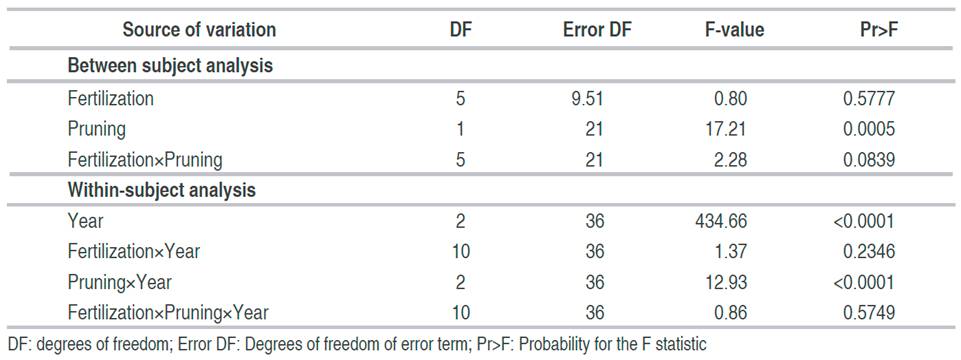
Effect of pruning on jatropha seed production
Seed production was low in the pruned trees in the first year of the study (74.86 kg ha-1) but then increased steadily during the study period (Figure 2). By contrast, seed production in the control plots (trees not pruned) reached a maximum level in 2015 and then decreased slightly in 2016. In 2016, seed production was highest in the treated plots (1,074.51 kg ha-1), while in 2015, it was highest in the control plots (849.54 kg ha-1). The interaction between pruning, fertilization, and year did not have a statistically significant effect on seed production.
Figure 2: Mean seed production (dry weight, kg-1 ha-1 year-1) for pruned and unpruned (control) jatropha, during the trial (2014-2016) at the Portoviejo Experimental Research Station (EEP /INIAP).
In the presented research, a total of 228 jatropha trees sampled was assessed with a density planting of 2×2 m (2,500 tree ha-1) and pruned at 1.5 m of jatropha altitude. Pruning is expected to increase jatropha seed yield because the flowers are produced at the end of each branch, and pruning encourages branching and thus seed production. In a study carried out in Ukulinga (South Africa), in an area characterized by a mean annual precipitation of 600 mm, mean annual temperature of 18.4 °C and after two years of jatropha plantation, Everson et al. (2013) showed that pruning did not significantly increase seed yield (jatropha plantation of 4 years old, pruned at 1.75 m and densities of 3×3 m, 2.5×2 m, and 3×2 m). Similar results were obtained by Singh et al. (2013), at seven sites in India under different climate and soil conditions, the yields were unacceptable when this practice was applied to large-scale plantation on degraded land (density plantation 2×2 m, pruned at 30, 45, and 60 cm of jatropha tree and 80 sampled trees). Ghosh et al. (2007) reported that pruning left a higher number of secondary branches of approximately 30% compared to unpruned jatropha. Pruning harmed fruit formation (no data of density plantation, sampled trees, and pruning heigh was proportionated). It was observed a different pattern, i.e., an initially reduced yield and increased yield after two years of the treatment.
It has been recommended that jatropha should be pruned in the dry or dormant season to encourage branching and increase the number of inflorescence buds and to form a low bushy crown to facilitate harvesting (Maes et al., 2009). This recommendation was followed in the present study, and the trees were pruned three years after plantation establishment. Investigating the optimal age for pruning jatropha during the first five years, Santoso et al. (2016) demonstrated that mean seed yield was highest in trees pruned two years after plantation establishment (the highest seed yields were obtained in years 4 and 5, i.e., 2 and 3 years after pruning).
Although pruning may negatively affect flowering and seed yield in the short term, the long-term effects should be tested in a perennial jatropha plantation (Negussie et al., 2015). Tjeuw et al. (2015) pointed out the difficulty of comparing the effects on seed production observed in different studies as not all include a control treatment (no pruning). In the present study, the pruning reduced seed yield by 66.3% relative to the control treatment in the first year. Ghosh et al. (2007) reported a reduction in seed yield of 67% in a jatropha plantation in Madagascar and suggested that the decrease was probably related to the increased competition between fruit production and new vegetative growth to recover the photosynthetic potential. In the present study, the seed production in the second year (2015) was still 8.4% lower in pruned than in unpruned trees; however, this trend was reversed in the third year (2016) when the seed production was 37.9% higher in pruned than in unpruned trees. The slow recovery of jatropha seed yield two years after pruning may indicate that the tropical dry forest conditions are less favorable to the recovery of vegetative and reproductive growth of the new crown.
From the perspective of small subsistence farms, pruning represents a high input of labor (Goswami et al., 2011). The decreased production, although only in the first year, reduces the probability of the technique being adopted in jatropha plantations due to the initial high associated costs (Negussie et al., 2015). Future studies should examine whether access to long-term demonstration plots, preferentially as on-farm experiments, would convince farmers of the benefits of early allocation of labor as an investment in long-term higher yields.
Effect of time on jatropha seed production
A relatively unpredictable annual dry seed production and low seed production over time are the significant drawbacks of the jatropha tree for biofuel production (Rade-Loor et al., 2017; Cañadas-López et al., 2017; Cañadas-López et al., 2018). Thus in 2014, with a precipitation of 824 mm in the rainy season (between January and May), the seed yield in the pruned trees was only 74.86 kg ha-1; in 2015, the yield was
849.54 kg ha-1 (rainy season precipitation 806 mm); and in 2016, the yield was 1,074.46 kg ha-1 (rainy season precipitation 745 mm). There was no relationship between jatropha seed yield and the amount of precipitation during the rainy months in the study area. Likely, the relationship was outweighed by the stress exerted on the trees by the pruning. Nevertheless, there was also no clear relationship between yield and rainfall for the unpruned trees.
Phiwngam et al. (2016) assured that the climatic conditions probably did not have an important influence on seed production, considering that jatropha can survive a wide range of temperatures. Similarly, Cañadas-López et al. (2017) did not observe a direct relationship between dry seed production and rainfall in the province of Manabí. In a study by Achten et al. (2010), supplying water did not affect the biomass distribution (vegetative and reproductive), and there were no differences concerning the two types of pruning tested. These findings indicate that the patterns of biomass distribution are conserved and remain relatively constant.
Soil characteristics and effects of fertilizer application on jatropha seed production
Seed production was not significantly affected by either fertilization or any interaction between fertilization and pruning (Table 3). A summary of the soil analysis before fertilizer application is presented in Table 4. The main characteristics of the soil include a neutral pH, low levels of nitrogen, zinc, and iron; it also presented high contents of phosphorus, potassium, calcium, magnesium, copper, and manganese and moderate levels of boron.
Table 4: Soil chemical properties in 2013 before the start of the trial.

The ratio Mg/K (1.42) revealed Mg deficiency relative to K. The Ca/K ratio (12.66) was adequate for leaf and root growth. The Ca/Mg ratio (8.90) again indicated Mg-deficiency, while the Ca+Mg/K ratio (14.09) was higher than 10, which indicates adequate potassium assimilation.
Figure 3 shows the estimated nutrient extraction (as a percentage of the original nutrient content of the soil) for each fertilization treatment concerning a low and a high NPK extraction through the export of dry jatropha seeds. The NPK nutrients have been absorbed from the applied fertilizers considering the low extraction rate. In the case of high extraction, the soil reserves would have been used up, except in a) urea and c) potassium chloride treatments. According to a soil fertility study carried out in the central and southern areas of the Manabí province by Cañadas (1983), fertility levels are very similar to those obtained in the present study.
Figure 3: Estimated ranges of relative nutrient export from the soil through dry jatropha seeds: comparison of low and high extraction rates for each fertilization treatment (Low and high extraction rates by dry jatropha seeds were calculated according to Contran et al., 2013).
These results are representative of the soil conditions for the 3,000 producers in the "Jatropha for Galápagos Project." According to the soil analysis, nitrogen fertilization was justified. However, the Ca+Mg/K ratio was higher than 10, a threshold value, according to Fölster and Fassbender (1978). It justifies a fertilizer formulation with a relatively low dose of K. Corrections of micronutrient deficiencies were not considered in the fertilizer concept proposed by the small-scale producers. Before upscaling jatropha production, screening for potential deficiencies in micronutrients should be carried out. However, potential macro deficits are already derived from soil analysis and the requirements according to the literature.
Jatropha usually proliferated in the first two years after planting, and N is essential for the assimilation of carbon and the formation of new tree organs. According to Magalhães et al. (2018) the maximum accumulation of nutrients in jatropha plants is reached at 2.8 years in leaves, stems, fruits, and shoots for N, P, and K, coinciding with the maximum accumulation of dry matter in the tree. Magalhães et al. (2018) found that N accumulated in more significant proportions in the stem than in the leaves, while N levels in the leaves were subject to seasonal variations.
The P availability was high in the study area, while in studies undertaken in Brazil, it was found to be a limiting element and difficult to mobilize. Under restricted P availability, jatropha reacts positively to the application of phosphate fertilizers in the first years of the plantation (Silva et al., 2007). According to Lima et al. (2011), the application of phosphate fertilization mainly stimulates the growth of roots and leaves.
The high demand for K is required for dry seed production, which depends on the site soil conditions. A high K concentration is important for the formation of jatropha fruit (Magalhães et al., 2018). Lima et al. (2011) reported that young leaves had the highest levels of this element and were associated with greater photosynthetic activity. However, as these processes are reduced, K may be redistributed to other vegetative organs. Hence, potential losses of K due to the shedding of leaves can be compensated by prior redistribution (Pacheco et al., 2006).
The concentration of Ca in the fruit was very similar to that of K. This element must be available in sufficient quantity during the jatropha production phase (Magalhães et al., 2018). The Ca/Mg ratio in the present study indicates an Mg deficiency, and the Mg/K ratio indicates a deficiency of this element relative to K. According to Xu and Wang (2011), Mg plays a substantial role in P transport and oil and fat formation in the tree. Therefore, the role of micronutrients and Mg in the differentiation of female flowers demand more attention for further research in the study area.
The relatively high jatropha seed yields obtained in the control treatment in the present study would suggest the presence of arbuscular mycorrhizal fungi (AMF) that can transfer P, Zn, and N from the soil in exchange for carbon from the host tree (Bücking and Kafle, 2015).
CONCLUSIONS
The study findings indicate that jatropha seed yield may be substantially improved by pruning the trees for three years after planting. By contrast, the amounts of fertilizer tested by the smallholders producing jatropha in the province of Manabí (Ecuador) appear to be suboptimal. Arbuscular mycorrhizal fungi inoculation should be further studied, as this may represent a means of partly addressing the nutrient deficiencies. Clarification of whether micronutrient deficiency limits the yields is also required. Moreover, sufficient pollination should be crucial, and the management of this aspect needs attention. The findings suggest that under the prevailing conditions in tropical dry forest, jatropha plantations require diverse management input to increase yields for the success of the government initiative to further the electricity transition in Galapagos.
ACKNOWLEDGMENTS
The authors thank the Director of the Portoviejo Experimental Research Station (EEP) of the National Institute of Agricultural Research (INIAP) period 2015-2016 and INIAP General Director for the jatropha data release and the updating of the information.
REFERENCES
References
Achten WMJ, Maes WH, Aerts R, Verchot L, Trabucco A, Mathijs E, Singh VP and Muys B. 2010 Jatropha: From global hype to local opportunity. Journal of Arid Environmental 74(1): 164-165. doi: 10.1016/j.jaridenv.2009.08.010
Behera SK, Srivastava P, Pathre UV and Tuli R. 2010. An indirect method of estimating leaf area index in Jatropha curcas L. using LAI-2000 Plant Canopy Analyzer. Agricultural and Forest Meteorology 150(2): 307-311. doi: 10.1016/j.agrformet.2009.11.009
Bücking H and Kafle A. 2015. Role of arbuscular mycorrhizal fungi in the nitrogen uptake of plants: current knowledge and research gaps. Agronomy 5(4): 587-612. doi: 10.3390/agronomy5040587
Cañadas L. 1983. El mapa ecológico y bioclimático del Ecuador. Editores Asociados Cia. Ltd. Quito. pp. 50-120.
Cañadas-López Á, Rade-Loor D, Domínguez-Andrade JM, Vargas-Hernández JJ, Molina-Hidrovo C, Macías-Loor C and Wehenkel C. 2017. Variation in seed production of Jatropha curcas L. accessions under tropical dry forest conditions in Ecuador. New Forests 48(6): 785-799. doi: 10.1007/s11056-017-9597-1
Cañadas-López Á, Rade-Loor D, Siegmund-Schultze M, Domínguez JM, Vargas-Hernández J and Wehenkel C. 2018. Productivity and oil content in relation to Jatropha fruit ripening under tropical dry forest conditions. Forests. 9(10): 611. doi: 10.3390/f9100611
Contran N, Chessa L, Lubino M, Bellavite D, Roggero PP and Enne G. 2013. State-of-the-art of the Jatropha curcas productive chain: From sowing to biodiesel and by-products. Industrial Crop Products 42: 202-215. doi: 10.1016/j.indcrop.2012.05.037
Edrisi SA, Dubey RK, Tripathi V, Bakshi M, Srivastava P, Jamil S, Singh HB, Singh N and Abhilash PC. 2015. Jatropha curcas L.: a crucified plant waiting for resurgence. Renewable Sustainable Energy Reviews 41: 855-862. doi: 10.1016/j.rser.2014.08.082
Everson CS, Mengistu MG and Gush MB. 2013. A field assessment of the agronomic performance and water use of Jatropha curcas in South Africa. Biomass and Bioenergy 59: 59-69. doi: 10.1016/j.biombioe.2012.03.013
Fölster H and Fassbender H. 1978. Ökopedologische Grundlage der Bodennutzung in den Tropen und Subtropen. (Vorlezungsmanuskrip). Uni Göttingen Verlag, Göttingen. pp. 16-75.
Ghosh A, Chaudhary DR, Reddy MP, Rao SN, Chikara J, Pandya JB, Patolia JS, Gandhi MR, Adimurthy S, Vaghela N, Mishra S, Rathod MR, Prakash AR, Shethia BD, Upadhyay SC, Bakakrishna V, Prakash ChR and Ghosh PK. 2007. Prospects for jatropha methyl ester (biodiesel) in India. International Journal of Environmental Studies 64(6): 659-674. doi: 10.1080/00207230701766499
Goswami K, Saikia J and Choudhury HK. 2011. Economic Benefits and Costs of Jatropha Plantation in North-East India. Agricultural Economics Research Review 24(1): 99-108.
Iiyama M, Newman D, Munster C, Nyabenge M, Sileshi GW, Moraa V, Onchieku J, Gaper-Mowo J and Jamnadass R. 2013. Productivity of Jatropha curcas under smallholder farm conditions in Kenya. Agroforestry Systems 87: 729-46. doi: 10.1007/s10457-012-9592-7
Lima RLS, Severino LS, Cazetta JO, de Azevedo CAV, Sofiatti V e Arriel NHC. 2011. Redistribuição de nutrientes em folhas de pinhão-manso entre estádios fenológicos. Revista Brasileira Engenharia Agrícola e Ambiental 15(11): 1175-1179. doi: 10.1590/S1415-43662011001100010
Maes WH, Trabucco A, Achten WMJ and Muys B. 2009. Climatic growing conditions of Jatropha curcas L. Biomass and Bioenergy 33(10): 1481-1485. doi: 10.1016/10.1016/j.biombioe.2009.06.001
Magalhães SC, de Barros Silva E, Ferreira EA, de Menezes Reis T, Pereira GAM, Araújo FV and da Silva TP. 2018. Nutrient accumulation in the shoots of physic nut grown in two edaphoclimatic conditions. Semina: Ciências Agrárias 39(3): 983-998. doi: 10.5433/1679-0359.2018v39n3p983
Montenegro O, Magnitskiy S and Henao MC. 2014. Effect of nitrogen and potassium fertilization on the production and quality of oil in Jatropha curcas L. under the dry and warm climate conditions of Colombia. Agronomía Colombiana 32(2): 255-265. doi: 10.15446/agron.colomb.v32n2.43265
Negussie A, Nacro S, Achten WMJ, Norgrove L, Kenis M, Hadgu KM, Aynekulu E, Hermy M and Muys B. 2015. Insufficient evidence of Jatropha curcas L. invasiveness: experimental observations in Burkina Faso, West Africa. Bioenergy Research 8(2): 570-580. doi: 10.1007/s12155-014-9544-3
Pacheco DD, Saturnino HM, Mendes LD, Soares FR, Paula TD, Prates FDS and Souza LD. 2006. Produção de massa vegetal e composição mineral de plantas de pinhão-manso. In 3º Congresso Brasileiro de Plantas Oleaginosas, Óleos, Gorduras e Biodiesel, UFLA, Minas Gerais, Brazil.
Phiwngam A, Anusontpornperm S, Thanachit S and Wisawapipat W. 2016. Effects of soil moisture conservation practices, irrigation and fertilization of Jatropha curcas. Agricultural and Natural Resources 50(6): 454-459. doi: 10.1016/j.anres.2016.10.006
Rade-Loor D, Carreño-Mendoza L, Zambrano E y Cañadas-López Á. 2016. Emprendimiento Gubernamental en Manabí “Piñón para Galápagos”. Evidencias de Falta de Capital Social. En: V Evento Internacional La Universidad en el Siglo XXI. ESPAM-MFL, Calceta, Ecuador.
Rade-Loor D, Cañadas-López Á and Zambrano C. 2017. Silvopastoral system economical and financial feasibility with Jatropha curcas L. in Manabí, Ecuador. Revista MVZ Cordoba 22(3): 6241-6255. doi: 10.21897/rmvz.1129
Santoso BB and Purwoko B. 2016. Yield performance of Jatropha curcas L. after pruning during five years’ production cycles in north Lombok Dry Land, Indonesia. Global Advanced Research Journal of Agricultural Science 5(3): 103-109.
Singh B, Singh K, Rao GR, Chikara J, Kumar D, Mishra DK, Saikia SP, Pathre UV, Raghuvanshi N, Rahi TS and Tuli, R. 2013. Agro-technology of Jatropha curcas for diverse environmental conditions in India. Biomass and bioenergy 48: 191-202. doi: 10.1016/j.biombioe.2012.11.025
Silva JTA, Costa EL, Silva IP and Moura Neto A. 2007 Adubação do pinhão-manso (Jatropha curcas L.) com nitrogênio e fósforo. In: 4° Congresso Brasileiro de Plantas Oleaginosas, Óleos, Gorduras e Biodiesel. Lavras; Minas Gerais, Brazil.
Suriharn B, Sanitchon J, Songsri P and Kesmala T. 2011. Effects of Pruning Levels and Fertilizer Rates on Yield of Physic Nut (Jatropha curcas L.). Asian Journal of Plant Science 10(1): 52-59. doi: 10.3923/ajps.2011.52.59
Tewari DN. 2007. Jatropha & Bio-diesel. First Edition. Ocean Books Ltda, New Delhi. pp. 10-40.
Tjeuw J, Slingerland MA and Giller KE. 2015. Relationships among Jatropha curcas seed yield and vegetative plant components under different . Biomass and Bioenergy 80: 128-139. doi: 10.1016/j.biombioe.2015.05.003
Walmsley D, Bailis R and Klein AM. 2016. A global synthesis of jatropha cultivation: insights into land use change and management practices. Environmental Science and Technology 50(17): 8993-9002. doi: 10.1021/acs.est.6b01274
Xu G and Wang R. 2011. Sulfur and boron-magnesium-zinc compound fertilizer contribute to the reproductive growth of Jatropha curcas L. Journal of Plant Nutrition 34(12): 1843-1852. doi: 10.1080/01904167.2011.600411
How to Cite
APA
ACM
ACS
ABNT
Chicago
Harvard
IEEE
MLA
Turabian
Vancouver
Download Citation
CrossRef Cited-by
1. Leiner Ferdinan Alcívar Álvarez, Julia Orlenda Robinson Aguirre. (2024). Comunidades de Aprendizaje: Cómo Fomentar Competencias Socioemocionales en Educación Física para Bienestar Estudiantil en Bachillerato.. ULEAM Bahía Magazine (UBM), 5(9), p.91. https://doi.org/10.56124/ubm.v5i9.011.
2. Álvaro Cañadas-López, Diana Rade-Loor, Carlos Molina-Hidrovo. (2020). In situ assessment of Jatropha curcas germplasm under tropical dry forest conditions in Manabí-Ecuador. Revista Facultad Nacional de Agronomía Medellín, 73(3), p.9273. https://doi.org/10.15446/rfnam.v73n3.85788.
3. Djair Felix da Silva, Luiz Antônio Dos Santos Dias, Fábio Santos Matos. (2023). Correlation between leaf nutrient contents and grain, oil and protein productivities in Jatropha curcas L. Revista Facultad Nacional de Agronomía Medellín, 76(3), p.10457. https://doi.org/10.15446/rfnam.v76n3.105714.
4. Enilson de Barros Silva, Lauana Lopes dos Santos, Paulo Henrique Grazziotti, Iracema Raquel Santos Bezerra, Willian Cleisson Lopes de Souza, Li Chaves Miranda, Ângela Aparecida Santos, Wesley Costa Silva, Bento Gil Uane. (2024). NPK fertilization for the first years of physic nut cultivated in two regions. Journal of Plant Nutrition, 47(19), p.3284. https://doi.org/10.1080/01904167.2024.2377816.
5. Álvaro Cañadas, Gina Elizabeth Álvarez Zambrano. (2024). Explorando el aprendizaje significativo en profesores de educación básica general, Distrito 13D07, provincia de Manabí.. Revista Ecos de la Academia, 10(19), p.9. https://doi.org/10.53358/ecosacademia.v10i19.965.
Dimensions
PlumX
Article abstract page views
Downloads
License
Copyright (c) 2020 Revista Facultad Nacional de Agronomía Medellín

This work is licensed under a Creative Commons Attribution-NonCommercial-ShareAlike 4.0 International License.
The journal allows the author(s) to maintain the exploitation rights (copyright) of their articles without restrictions. The author(s) accept the distribution of their articles on the web and in paper support (25 copies per issue) under open access at local, regional, and international levels. The full paper will be included and disseminated through the Portal of Journals and Institutional Repository of the Universidad Nacional de Colombia, and in all the specialized databases that the journal considers pertinent for its indexation, to provide visibility and positioning to the article. All articles must comply with Colombian and international legislation, related to copyright.
Author Commitments
The author(s) undertake to assign the rights of printing and reprinting of the material published to the journal Revista Facultad Nacional de Agronomía Medellín. Any quotation of the articles published in the journal should be made given the respective credits to the journal and its content. In case content duplication of the journal or its partial or total publication in another language, there must be written permission of the Director.
Content Responsibility
The Faculty of Agricultural Sciences and the journal are not necessarily responsible or in solidarity with the concepts issued in the published articles, whose responsibility will be entirely the author or the authors.



